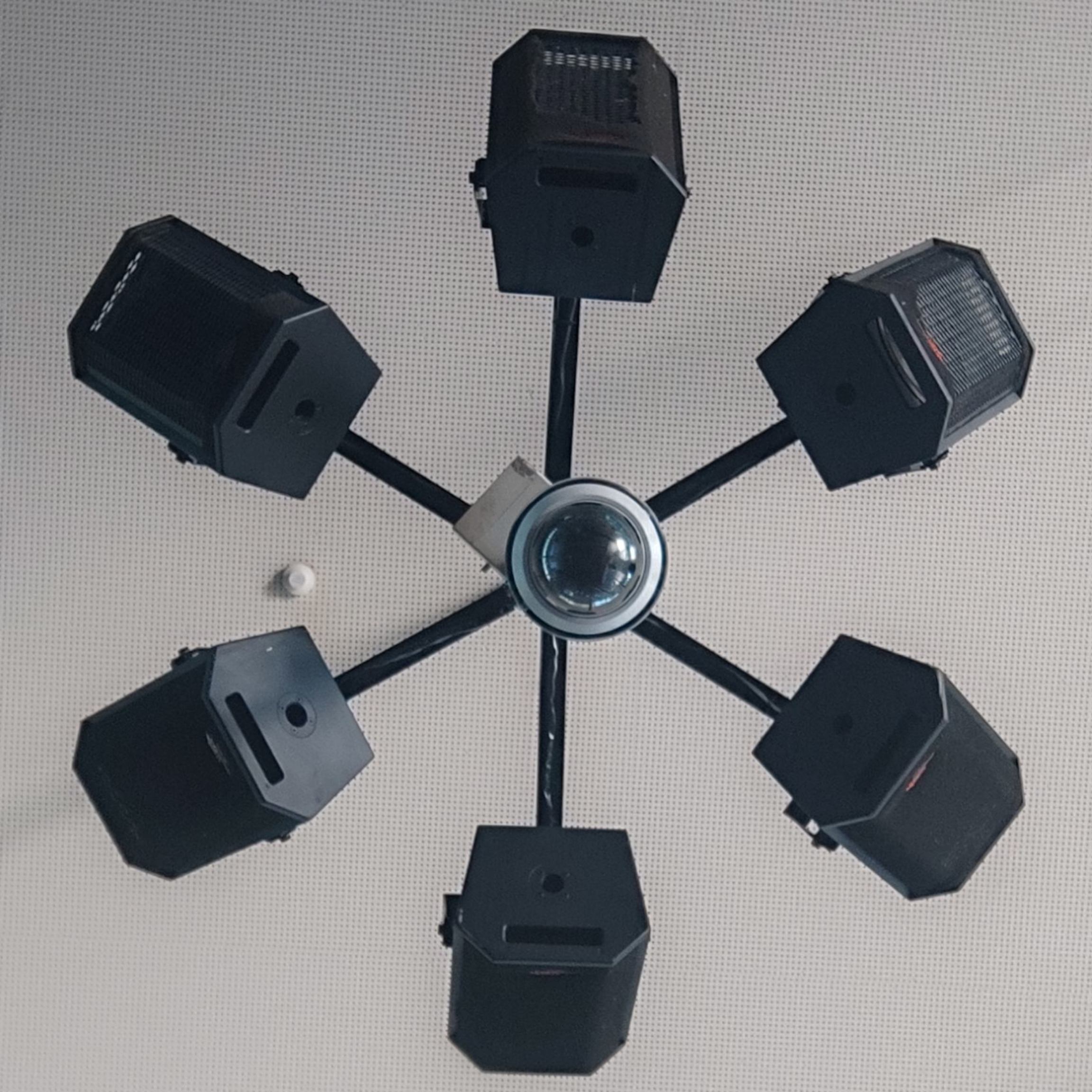I don’t mean BETTER. That’s a different conversation. I mean cooler.
An old CRT display was literally a small scale particle accelerator, firing angry electron beams at light speed towards the viewers, bent by an electromagnet that alternates at an ultra high frequency, stopped by a rounded rectangle of glowing phosphors.
If a CRT goes bad it can actually make people sick.
That’s just. Conceptually a lot COOLER than a modern LED panel, which really is just a bajillion very tiny lightbulbs.
Before transistors there were vacuum tubes which did the same thing but using very different principles (and were also way bigger, even than traditional transistors and billions of times more than the transistors in the most modern ICs)
Before electric milling or even steam milling, flour used to be milled using watermills and windmills which, IMHO, are way cooler.
I’m a sucker for Nixie Tubes
I have a broken Nixie clock, at home, it looked great when it was working
dial-up modem-router noises when connecting to the Internet
The internet
Cars used to be cool. Every car company had some kind of sporty car, a couple cheap cars, a big luxury sedan and, a while ago, a station wagon.
Now every car is an SUV or CUV. Sedans are getting phased out. Cool sports cars don’t make money so they don’t make them. People don’t buy station wagons so they don’t make them. And they’re pushing big, angry trucks on everyone.
I dunno about you, but I have a hankering for the mid-to-late-80s aesthetic, but specifically that taken into sci-fi. I’m talking Cowboy Bebop, Outlaw Star etc. 80s tech but… Future!
Everything’s so chunky and functional. It looks like you could hit it with a sledgehammer and it would still work!
Basically, BUTTONS! Gimme buttons, lots of big buttons! I want things that go click so I can be sure I’ve pressed them. I don’t want a tiddly little touchpanel for my washing machine, I want a button that goes CLACK when I press it!
I guess, in a very liberal definition of the term, “cloud gaming”. Specifically the old LodgeNet systems in hotels where you could rent Nintendo games by the hour to be streamed to your room from a physical console somewhere behind the front desk. Every room had a special controller with oodles of extra buttons on it hardwired to the television that also functioned as television remotes.
The service was objectively awful, of course, when factoring in how much the hotel charged compared to what little you got for it. But I’ve always found it fascinating.
I’ve got another one: Airplanes.
There used to be crazy designs and a lot of variation between planes. Tandem seats, swing wings, dual tailplanes, gull wings, all sorts of crazy design choices side by side. Even commercial airplanes had lots of variation. Trijets with tail stairs, engines embedded in the wing roots.
Planes now all sort of look the same. Every fifth generation fighter looks the same. Granted, this is because they’re hitting physical constraints of aerodynamics and stealth, but that limits the creativity of the designers.
Any mechanical regulation process that used to be handled by actual machine parts. Think of the centrifugal governor, this beautiful and elegant mechanical device just for regulating the speed of a steam engine. Sure, a computer chip could do it a lot better today, and we’re not even building steam engines quite like those anymore. But still, mechanically controlled things are just genuinely a lot cooler.
Or hell, even for computing, take a look at the elaborate mechanical computers that were used to calculate firing solutions on old battleships. Again, silicon computers perform objectively better in nearly every way, but there’s something objectively cool about solving an set of equations on an elaborate arrangement of clockwork.
To add, there is something about those old 40s and 50s era technical films like you linked that is just so… I don’t what exactly it is, but I find them fascinating and genuinely informative, even though they are explaining tech that is decades obsolete.
It’s pretty awesome that they are still available 70+ years later in excellent quality!
The idea of punch card programming blows my mind.
He’s not talking about punch card programming, that’s way more advanced and requires a Turing machine, what he’s talking about is computers as the term was using before what you would think as a computer existed.
The example in the video is for the computer on a cannon in a battleship. If there wasn’t a computer you would need to adjust the angle and height of the cannon, but that’s not something a human can know, what humans can know is angle to the ship and the distance to it, so instead you put two inputs where a human inputs that and you translate that into angle/height. Now those two would be very straightforward, essentially you just rename the height crank to distance. But this computer is a lot more complex, because wind, speed, etc can affect the shoot, so you have cranks for all of that, and internally they combine into a final output of angle/height to the cannon.
That’s cool, but punch card programming blows my mind.
Someone showed me a record turntable with what must have been a centrifugal governor! What an ingenious device. (I got the impression from him this was unusual for a turntable, at least…)
I was under the impression that all wind-up turntables (I.e.: from the shellac records and steel needles and mechanical reproducers era) were using mechanical governors
Maybe I’m wrong though.
Oh I know little to nothing about turntables, so you’re probably right :-)
H model C-130s, the ones with the 4 square blade props? The engines and props are mechanically governed. There are electronic corrections applied, but the core of the systems are purely mechanical. Still flying.
Source: former flight engineer on them.
Centrifugal governors are possibly one of the origins of the phrase “balls out” or “balls to the wall” (although many say “balls to the wall” has to do with the ball-shaped handles on old aircraft throttle levers)
Also somewhat similar to governors are centrifugal switches, which are used in just about anything with an electric motor to disconnect the motor from a capacitor which gives the motor a little extra juice to get it going (I like this video for an explanation of how they work)
I didn’t know that was a thing. Thanks! I’m honestly surprised some MBA bean counter hasn’t replaced those with a chip of some sort by now. Really cool!
I’m going back to video games that had multiplayer before we had network connectivity. If I wanted to play against a friend, we would have to get together in person and hang out. Game was done, you had a friend over for dinner. Or just a friend to come over and help you with the game. I miss when games were actual social events.
Automatic watches and grandfather clocks. The way they kept track of time using only mechanical principles is crazy. How does my automatic watch recharge itself using only the movement from wearing it and keep accurate track of time. Grandfather clocks are cool because they’re so power efficient.
They are very cool indeed. And the fact that you can have a century old watch on your wrist and it’s just as useful as a modern one. In fact I’m wearing a watch from the 50s right now!
deleted by creator
The internet
Toasters. Specifically the Sunbeam Radiant Control toaster, with the tag line “Automatic Beyond Belief!”. There is a fan site (https://automaticbeyondbelief.org/, excellent url). Like, what other appliance line has a fan site? Surely no modern day toaster!
But of course I first heard about it from Technology Connections video.
LED panel, which really is just a bajillion very tiny lightbulbs.
It is not, but for the sake of the argument it’s ok.
A lot of older tech had a way more interesting silhouette. You can see this clearly in how many objects live on in icon form. We still often use handset phones, magnifying glasses, gears, or the infamous floppy disk save icon. I think the staying power of these really comes from how ephemeral and formless digital tech can be.
Reminds me of the device icons in Microsoft Intune.
Android is represented by a rounded rectangle. Linux is a rounded rectangle, but yellow. iOS is, you guessed it, a rounded rectangle, but black.
Windows, however, is a nice flat-screen monitor (read: a rounded rectangle on a stick)
Oh wow, that sounds like a great example









